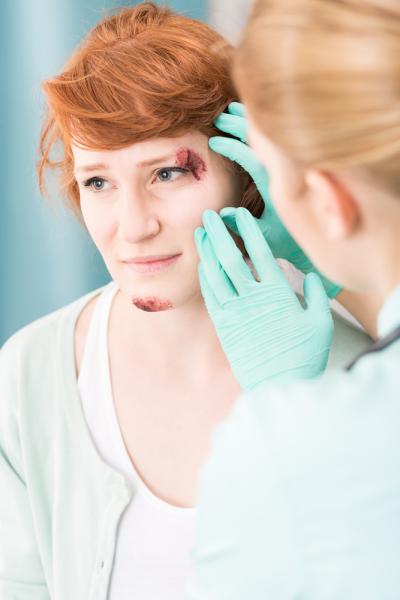We like to make it a point not to alarm parents unnecessarily. Part of our mission is to inform the public about health concerns, simply and calmly, without resorting to scare tactics to get attention. And the most recent news about youth sports and eye-related injuries should be treated in just that way.
Eyes and eyesight are vitally important. No question about it. And a recent retrospective study shines light on a health issue that, while important, has recently been overshadowed by other youth concerns, like concussions and severe knee injuries, especially among adolescent and teenage girls. That said, it's good to pay attention to what this new study tells us, learn where the injuries are taking place and consider some of the sensible precautions being proposed.
An examination of data from emergency room visits in the United States revealed that over a four-year period approximately 30,000 of them each year were for sports-related eye injuries. And that a majority -- two-thirds of females and 60 percent of males -- involved patients under age 18. Researchers also broke down the injuries by sport or activity, to better understand how the injuries took place and to provide the means by which they can be minimized.
"Ocular trauma can lead to lifelong sequelae," (abnormal condition related to a pre-existing disease), "and sports-related ocular injuries have been shown to disproportionately affect the young," writes R. Sterling Haring in a paper titled "Epidemiology of Sports-Related Eye Injuries in the United States," and published online recently in JAMA. "Studies quantifying and characterizing the incidence and type of injuries seen with sports-related ocular trauma may be useful for resource utilization, training, and prevention efforts."
Analyzing data from a Nationwide Emergency Department Survey, covering January 1, 2010 to December 31, 2013, colleagues, along with Dr. Haring, who is a Doctor of Optometry, MPH, from Bloomberg School’s Department of Health Policy and Management at John's Hopkins University, determined that of the 120,847 emergency room patients with sports-related eye injuries, 58,123 were under-18 males and 16,055 were under-18 females. Meanwhile, these activities accounted for the most eye injuries:
Males
- Basketball -- 26 percent
- Baseball, Softball -- 13 percent
- Air Guns, Paintball Guns -- 13 percent
Females
- Baseball, Softball -- 19 percent
- Cycling -- 11 percent
- Soccer -- 10 percent
Two figures stood out, and both, interestingly, are unrelated to team sports: (1) the incidence of cycling injuries, and (2) the high proportion and severity of eye injuries resulting from using air and paintball guns. Regarding the first, most wouldn't connect eye injuries with bike riding, but when crashes into objects or onto the pavement occur, eyes are vulnerable. As for the second, "26 percent of all cases of visual impairment were due to air and paintball guns," according to Science Daily, "even though they made up less than 10 percent of all injuries." Most of those were attributed to air guns, since eyewear is nearly universally required at all paintball combat establishments.
But wherever the injuries occur, according to the experts, the consequences can be substantial.
"These are one-time injuries that can have lifelong impacts on the ability to gain an education, to earn a livelihood, to read or drive a car,” added Dr. Haring. "This needs to be recognized on the policy level and on the personal level as something we should be paying attention to.”
Ophthalmologists and eye care specialists recommend that young athletes get accustomed to wearing wraparound glasses as a protective measure.
 "Eye injuries are the leading cause of blindness in children in the United States and most injuries occurring in school-aged children are sports-related," states the National Eye Institute. "Protective eyewear, which is made of ultra-strong polycarbonate, is 10 times more impact resistant than other plastics, and does not reduce vision. All children who play sports should use protective eyewear -- not just those who wear eyeglasses or contact lenses. For children who do wear glasses or contact lenses, most protective eyewear can be made to match their prescriptions."
"Eye injuries are the leading cause of blindness in children in the United States and most injuries occurring in school-aged children are sports-related," states the National Eye Institute. "Protective eyewear, which is made of ultra-strong polycarbonate, is 10 times more impact resistant than other plastics, and does not reduce vision. All children who play sports should use protective eyewear -- not just those who wear eyeglasses or contact lenses. For children who do wear glasses or contact lenses, most protective eyewear can be made to match their prescriptions."
It's worth pointing out that the number of injuries included in the study is just a portion of the overall total that occur each year. That's because Dr. Haring's study records only emergency room visits, and not treatment provided from other health care facilities.
Finally, as we all know, when our kids participate in sports we are all courting a degree of danger. So while no one is saying that eye injuries are an acceptable result of our kids' physical and sporting activities, there will be those families that won't heed Dr. Haring's advice, citing issues involving cost, inconvenience or style. But since coaches and trainers of youth sports teams almost never require their players to don protective glasses or goggles, that decision falls to the supervising adult at home.
Which means parents, whether you knew it or not, the eyewear ball is in your court.




